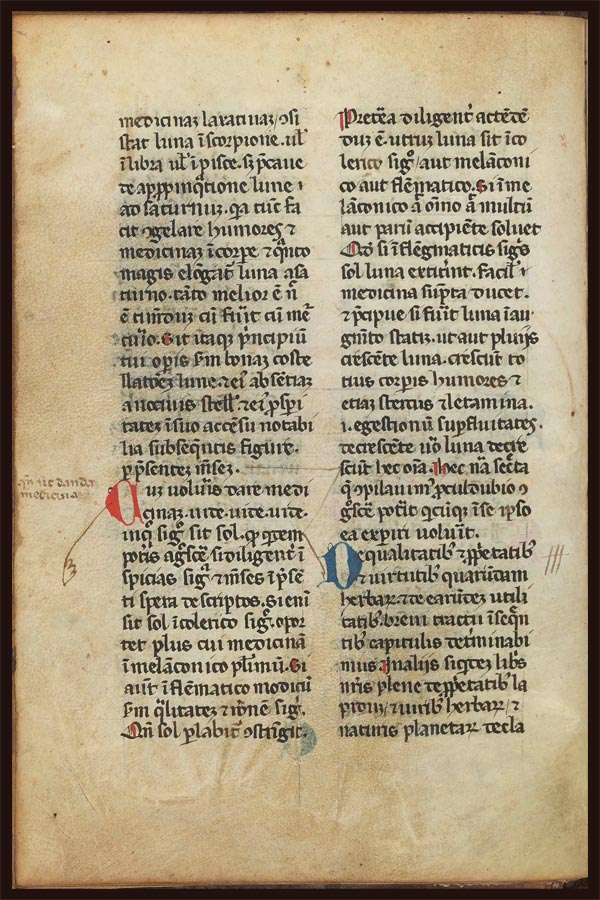The Latin text of the Secretum secretorum, or Secret of Secrets, as preserved in this fourteenth- century manuscript, has a complex history. Its earliest source is an eighth-century Arabic treatise entitled Book of the Science of Government, on the Good Ordering of Statecraft, commonly known by its subtitle, Secret of Secrets. The purported author of the text was Aristotle who, supposedly being too old to accompany his disciple Alexander on his campaign in Asia, wrote this book on the science of kingship in compensation for his absence—but modern scholarship has shown that this attribution is apocryphal. From the ninth century onward, a series of revisers added material to the original text. For instance, a section on health was inserted, including topics such as hygiene, diet, exercise, and medical astrology.


